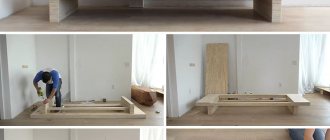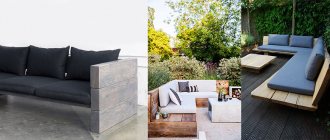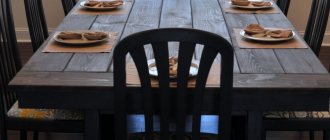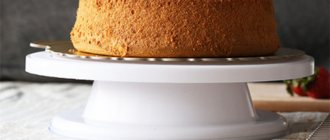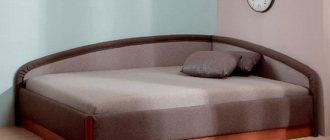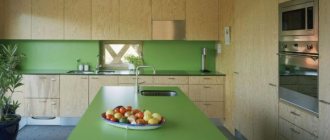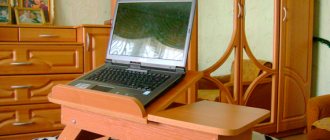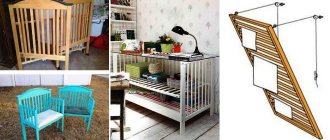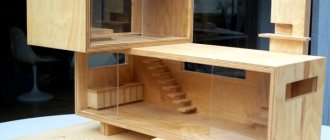Assembly nuances
To prevent the process from turning into chaos, the following should be observed:
Thinking about how to assemble furniture? The answer is simple - everything should be done sequentially, as indicated in the manual. This will avoid confusion and errors. Each type of fastening has its own designation and a special hole in the furniture piece. The name and purpose of the fasteners must be specified in the instructions
It is important not to confuse them with each other. Most often, the assembly process begins with connecting the side elements with the lid and the lower part of the body
If the furniture requires several sets, for example, a kitchen and a living room, then each section should be unpacked and assembled separately. Otherwise there will be a lot of confusion. Professionals recommend assembling the lower part of the headset first and only then moving on to the upper parts. Cover the floor with fabric or cardboard from furniture packaging. This is necessary so as not to damage the flooring and parts of the product. When looking for an answer to the question of how to assemble furniture, it is worth keeping in mind that this process will take an inexperienced person much more time than a professional. Therefore, you should be prepared to spend not only a fair amount of nerves, but also time. It is quite possible that you will have to change parts and sequence several times and correct your own shortcomings. Try not to confuse the details. They may look almost identical, but differ in one additional hole or length. During assembly they will have different attachment points. A person who wants to assemble furniture himself should be able to distinguish between the front and back sides of the end. In fact, everything is simple here - the edge of the front part is always processed, but the back part is not. It is also very easy to confuse the bottom of the side elements and the top. Holes are usually cut in the bottom side for attaching legs or a plinth. On factory furniture, all the holes are made where they should be. Exceptions occur in extremely rare cases. If something doesn’t work out for you, then most likely it was you who made the mistake. There is no need to break fittings and parts trying to insert them where they do not fit. Don't rush to drill new holes that (in your opinion) the manufacturer forgot to do. About
Detailed instructions for assembling and disassembling the accordion sofa
Thanks to its compact dimensions and high performance characteristics, a sofa with an accordion mechanism is very popular. This model transforms into a spacious sleeping area, so it is perfect for both living rooms and children's rooms. If necessary, upholstered furniture can be moved from one room to another. Knowing how to assemble a sofa accordion, this will not be difficult. The model has a simple design that every man can handle without much effort.
Device and dimensions
The sofa consists of a supporting (load-bearing) structure, most often including a drawer, a bed - a sofa, if there is a lifting drawer, a backrest and armrests. In transformable products (sofa bed), a transformation mechanism and, possibly, additional pillows stored in a drawer are added to them. Typical sofa sizes:
- Length – 1200-1900 mm.
- The width of the sofa is 550-700 mm.
- The height of the armrests is from 100 (ottoman) to 400 mm.
- Back height, without extras. pillows – 200-700 mm.
- Backrest tilt – 5-20 degrees.
- The height of the “sitting” surface of the sofa above the floor is 400-450 mm.
The last parameter, in turn, consists of:
- Legs – 50-70 mm.
- Support frame – 50-100 mm.
- Box – 150-250 mm.
- The bottom of the sofa (with frame) is 55-75 mm.
This leaves up to 120 mm for soft padding with sheathing. If its thickness exceeds 70 mm, the sofa is considered soft, 40-70 mm - semi-rigid, up to 40 mm - hard.
Materials for making a sofa book
- Foam rubber 25 density in the following sizes: 2000×1400×60 (1 sheet), 2000×1600×40 (1 sheet), 2000×1600×20 (1 sheet);
- Fabric 6 m/n width 1.4 m;
- Transformation mechanism for a book sofa (1 set);
- Wooden slats and holders 32 and 64 pcs. respectively;
- Non-woven fabric 4 m/p;
- Plastic legs (4 pcs.);
- Fiberboard 1.7x2.75, thickness 3.2mm (1 sheet);
- Furniture bolts 8×120 (4 pcs.);
- Furniture bolts 6×40 (4 pcs.);
- Furniture bolts 6×70 (8 pcs.);
- Nut 8 (4 pcs.);
- Nut 6 (12 pcs.);
- Nails 70 (20 pcs.);
- Nails 100 (40 pcs.);
- Self-tapping screws 89D (20 pcs.);
- Self-tapping screws 51D (16 pcs.);
- Staples 10mm (1000 pcs.);
- Staples 16mm (300 pcs.);
- Adhesive for foam rubber;
- Beam: 40×60×1890 (2 pcs.); 40×60×1790 (2 pcs.); 40×60×530 (6 pcs.); 40×50×330 (4 pcs.); 50×50×200 (4 pcs.);
- Board 25mm thick: 1900×200 (2 pcs.); 800×200 (2 pcs.); 800×50 (2 pcs.); 1000×50 (12 pcs.);
Advantages of reupholstering yourself
Updating your sofa yourself has the following advantages:
- You can select any material and add various decorative elements.
- While reupholstering the sofa, you can simultaneously correct defects in the spring block or frame. If you entrust the reupholstery to professionals, then they will only deal with it, and you will not even know that during the work you should have corrected defects in the furniture or repaired some components or elements.
- The cost of independent work will be quite low, since you will not need to pay for the work of someone else. You will need to spend a certain amount on materials and prepare the necessary tools.
- It is better to repair the sofa yourself within the walls of the house. There will be no need to waste time and energy transporting it to the workshop or waiting for the craftsmen to restore it. We wrote about repairing sofas with our own hands here.
- The process of restoring an old sofa will be cheaper than the option if it were necessary to replace it with a new one.
Step-by-step instructions on how to assemble a corner, straight and modular sofa
I'll tell you how to assemble a sofa at home, with your own hands. I will provide drawings on how to assemble and what the sofas are made of. By following a certain sequence of actions, showing patience and accuracy, assembling a soft, comfortable sofa yourself without involving third parties will not be difficult.
- How to assemble a sofa correctly
- Assembling the corner model
- Straight model
- Modular design
Fixing the back wall
After checking the diagonals, you need to fix the back wall. Most often it is made of fiberboard material, so fastening can be done in one of three ways:
- Nails.
- Self-tapping screws and confirmants.
- Furniture stapler.
If the choice fell on the latter option, then it is recommended to take hardened staples for the stapler, with a thickness of at least 15 mm.
Sometimes a groove is provided for the back wall. In this case, there is no need to set the diagonal and fasten it.
When tightening screws, try to do it as evenly and tightly as possible. If confirmants are used, they do not need to be pressed in deeply, otherwise the plugs cannot be put on them.
When fixing, do not tighten the fasteners too much. The final tightening is best done when the body of the product is finally assembled. Make sure that there are no gaps at the joints.
Preparation of materials and tools
List of materials:
Drawing of a Eurobook sofa.
- mechanism for laying out a sofa;
- pine beam with a section of 50x50 mm;
- boards with a section of 150x50 mm;
- Chipboard, fibreboard (or plywood) made of birch 5 and 15 mm thick;
- nails, self-tapping screws, wood screws;
- foam rubber with a density of 30 kg/m3, thickness 100 mm or 20 and 40 mm;
- padding polyester with a density of 14-170 g/dm;
- wood glue,
- glue for foam rubber;
- fabric for furniture;
- legs for upholstered furniture.
Required tools:
- miter box;
- hand or circular saw;
- electric drill;
- screwdriver;
- stapler for furniture;
- sewing machine;
- construction knife.
Useful tips
To make a soft sofa, it is recommended to choose functional models with drawers and good quality filling. Roll-out (retractable) options with rollers and guides are very popular. They are good because they don’t require any physical effort to unfold.
You should not save on fittings, because the life of the furniture depends on the reliability of the fasteners. It is better for novice joiners and carpenters to choose clear geometric models. They suit interiors in any style. They are also much easier to make clearly and neatly compared to furniture of complex shapes.
Tenon joints located at the ends of the boards increase the strength of the product and increase its service life. However, it is impossible to make them at home; this requires special equipment. For this reason, a novice carpenter should not set himself such a task.
Experts do not recommend connecting individual elements together using nails. Instead, experienced craftsmen use screws or self-tapping screws. If nails are used, the fastenings gradually become loose.
Recommended wood species for making a sofa at home are spruce and pine. Before work, the boards are carefully sanded - the surface of the material should be smooth, without roughness. You should not cut boards indoors, as wood dust accumulated in the air is harmful to health and can cause allergies.
For padding the back you need to use thin foam rubber, for the seat - denser. You can glue several sheets together
It is necessary to pay attention to the tightness of the joint of soft parts with each other. A thin layer of synthetic padding is placed on top of the foam rubber to protect the filler from external influences.
In furniture factories it is used to make sofas softer.
In order for wood or chipboard products to last a long time, all parts must be treated with a special furniture varnish (stain). If the garden sofa is intended for children's relaxation, the covering should not contain aggressive and allergenic chemicals. Homemade sofas have many advantages. They fit well into any space, look unusual, and are suitable for sleeping and relaxing. The main thing is to choose high-quality material for work and clearly understand the step-by-step sequence of actions. Then making upholstered furniture with your own hands will become an interesting hobby.
Roll-out
Children's sofa in the interior
Sofa made of pallets treated with stain
Sofa assembly instructions
It is possible to independently assemble any sofa, be it a modern transformer (for example, a folding bed, a saber or a roll-out version) or an ordinary static product, devoid of any additional systems
When preparing these furniture designs, it is important to adhere to their detailed diagram so as not to make a mistake anywhere. Let's look step by step at how you can assemble different types of sofas yourself.
Corner
Nowadays, corner sofa models are rightfully recognized as one of the most popular.
Often corner models are equipped with additional mechanisms that allow you to organize a full-fledged sleeping place.
Corner models are available in a wide range. There are both large and mini sofas. To assemble furniture of any size of the specified type, you need to combine 3 main components of the structure:
Before starting work, you need to inspect the base. If it has a mechanism, it’s also worth taking a closer look at. It can be right-handed or left-handed.
- Unpack each piece of new furniture. Check the quality of all components and the integrity of the package.
- Prepare all the necessary tools.
- Supporting parts must be attached to the base base, corner compartments and armrests using screws.
- Attach the rollers to the extension part.
- Use screws to connect the side panels and corner sections. Make sure that all elements are well secured.
- Next, connect the base base and the back.
- Fix the back wall and the second armrest.
- The roll-out mechanism included in the kit must be installed on the guides present in the side part.
Knowing this scheme, you can build and assemble such furniture yourself, using the materials listed above. The main thing is to first prepare a design drawing with detailed parameters of the future product.
Direct
Assembling standard straight sofas at home can be simple and quick if you take into account all the features of the purchased model and have its detailed diagram at hand.
We will analyze step by step how to assemble such products according to all the rules.
It is necessary to carefully unpack each piece of upholstered furniture. Make sure the fittings are of good quality. The unpacked parts are allowed to lie for a while so that they take their natural shape and adapt to the temperature and humidity of the room around them.
Place all the necessary tools and equipment near you. Here you will definitely need a hexagon, a screwdriver and a screwdriver.
The first step is to screw on the furniture legs, since the already assembled furniture structure may be too heavy and lifting it will be completely inconvenient.
Next, you can proceed to the main stage of assembling the product. Connect the back and seat to each other, carefully aligning all the necessary holes, inserting and screwing bolts or screws into them. Then, on both sides of the wooden frame, you will need to place and secure the armrest and other decorative components.
Check how the mechanism works in the assembled sofa after completing all stages of work
It is important that the existing system operates smoothly, without squeaks, crunches or other suspicious noises.
Modular
The new modular sofa is a piece of furniture that will be significantly different from all the models listed above.
Separate sections can somehow be connected to each other, or they can only be moved (attached) to each other.
Often modular models of sofas that are already assembled go on sale, and the buyer only needs to combine all the details in accordance with his own wishes. Ready-made modules are usually selected in the store.
As one option, a modular sofa can look like a transforming system. If necessary, such a soft product can be quickly and easily transformed without much effort or time, turning into a very comfortable and cozy bed. Sections can also be given a variety of shapes.
Let us present an algorithm of actions in the case of a modular system.
- Lay the eurocover on a flat and solid base.
- Place the backrest frame and seating parts in the lined case one at a time.
- Install a transforming mechanism. In this case, you need to be as careful and careful as possible. Springs on mechanisms after installation should be located on the side of the seats. Each mechanism has 4 pairs of holes. To attach to the frame base, use internal ones (they are located close to the connection point).
- Place the sofa on the box. Carefully align the grooves in the mechanism design with the holes in the box. The entire system will need to be secured with screws.
Sofa shapes and types of filling
The following types are distinguished:
Straight is a popular option, often called a classic sofa. Finding the required dimensions of such a sofa to suit the room will not be difficult.
Corner is a roomy and L-shaped option that is practical, saves space by being placed in a corner, and also combines the function of a bed.
Modular is a representative of a new generation of upholstered furniture that does not have a fixed configuration. There are sections that are transformed and composed in accordance with the ideas of the owner of the sofa. At the same time, they can either be fastened together or simply placed next to each other.
In the production of soft parts, two types of fillers are used, which determine the following varieties: spring sofas (with dependent and independent blocks) and foam sofas (they use polyurethane foam).
Shield
Self-assembly of the sofa
This method is suitable for people who do not have woodworking skills. This option is a little simpler and to implement it you need to stock up:
- two used door leaves;
- metal staples;
- wood hemp;
- foam;
- upholstery material.
Wooden version
The base and back of this sofa model will be two used wooden door leaves. You will need to first clean them of old coatings and dirt, and then treat them with a grinding machine.
Next, the doors are painted in the color of your choice, while trying to ensure that it matches the overall interior of the room in which the sofa will be installed in the future. You may prefer finishing the wooden surface with veneer.
Using nails, fasten one sash to a wooden stump of the appropriate size, and then use metal staples and glue to secure the second part (the back) to it.
After this, start making the mattress: cut out the foam rubber of the same size as the seat and cover it with thick fabric (matting is ideal for this). Already on top of this material a bright fabric of good quality will be stretched.
The main requirement is the construction of the most durable and reliable frame foundation. It bears the entire main load, and if you neglect this requirement, you can get injured during operation, and it will not last long. Based on this, you can choose a different base material that meets the requirements.
You can play with the finished design in any way you like, it all depends on your preferences and imagination.
Back
Frame corner sofa
No less important in this matter is the collection of a strong back for the sofa. Since this version of the sofa is quite simple and does not provide for a folding system, the backrest is made in the same way with a frame base. The backrest is fixed to the base using thick metal corners as tightly as possible. How much the back will be tilted is up to you to decide, based on your feelings.
What you will need
Before you begin installation work, you should prepare the necessary equipment. To assemble the bed you will need a set of tools and additional materials.
Tools
The standard configuration of the bed includes various fasteners, to work with which you will need screwdrivers, ring wrenches and a screwdriver with a set of attachments. Since modern types of bedroom furniture often use Euroscrews with a hidden head and internal hexagon, it is also worth preparing keys for confirmation.
Materials
The assembly kit consists of fixing elements, body parts, lifting mechanism, mattress and decorative components. Before starting installation, it is worth checking the availability of all materials and laying them out at the work site.
Instructions
To properly assemble a bed with a lifting mechanism, you must read the instructions. As a rule, installation instructions are included with the bed. Having previously studied the manual, you will be able to get a general idea of the work ahead and calculate your capabilities. If necessary, assistants can be hired for further assembly.
Basic Rules
The work of independently assembling a furniture structure is accessible to most home craftsmen. You just need to take into account that often all stages turn out to be labor-intensive.
When assembling upholstered furniture yourself, you must adhere to a number of basic rules.
- It is necessary to keep the assembly instructions for the factory product on hand. Typically, such accompanying documents contain schematic images of each stage of the work. You should not neglect familiarization with this component. It is in the instructions that all the nuances and features can be indicated, without knowing about which, assembling the furniture will be difficult.
- It is recommended to prepare all the tools and materials in advance so that during assembly you do not get distracted and look for the necessary items, only wasting time. Wrenches must be of the required sizes. You will need a hexagon, a screwdriver, and a good screwdriver. You should use reliable and high-quality devices that will not let the master down at the most crucial moment.
- When studying the accompanying documentation that comes with a set of upholstered furniture, you should also pay attention to the declared package. All necessary components must be included with the furniture structure. You should make sure of this before starting any work.
- When assembling a sofa of any design and shape, you should not rush to tighten the fixing bolts all the way. It is much simpler and easier to correct all defects and assembly errors if the bolts are not tightened too much.
- Assembly should be done slowly. We must act carefully, carefully, without neglecting any of the steps. Be patient. If you assemble furniture carelessly and hastily, you can accidentally damage any part of the structure or lose small parts, without which it will not be possible to complete the assembly.
- It is very important to ensure that the mechanism present in the furniture structure is installed correctly. If you install it incorrectly or make some mistakes, it will not function properly.
If you adhere to these simple rules, the assembly of upholstered furniture will be quick and there will be no need for further “work on mistakes”.
Drawings and diagrams
Competently compiled drawings and diagrams for assembling a corner sofa with your own hands determine the quality of the final result. Sketches should be extremely simple and understandable. The basic principle is to describe the size and location of all parts of future furniture. After the drawing of the future soft corner has been drawn, a detailed diagram of the location of all fasteners, reinforcing parts, partitions, and, if necessary, drawers is drawn up.
Some expert recommendations will help you do everything correctly:
When choosing the dimensions of furniture, it is important to measure in advance the place where it will be installed; first of all, a sketch is drawn, which necessarily indicates the length of the two halves of the sofa, its depth and the height of the back (this parameter can be arbitrary); The width of the sofa frame is calculated as the difference between the total length of the two halves and the depth.
The main points that are taken into account when creating a drawing of a sofa:
- back angle;
- dimensions of the entire structure and its individual parts;
- the need to install folding mechanisms;
- the need to arrange storage compartments;
- height of sofa legs.
For example, a timber base is shaded yellow, chipboard surfaces are shaded gray, and foam upholstery areas are shaded pink. The direction for tightening the screws is drawn with red arrows. This will help you quickly navigate and significantly reduce time costs.
Features of the sofa bed
These models are in particular demand among the population. The developers, having provided for all the positive qualities of sofas and beds, received the ideal design. The piece of furniture is placed in houses where there is no place to install an ordinary bed. The design is convenient and easy to transform. When creating a sofa bed with your own hands, you work with the following tools:
- Table saw.
- Electric jigsaw.
- Drill and drill bit.
- A screwdriver.
Work on assembling furniture does not begin until the design has been thought through and the drawings have been re-examined.
Materials used
The frame of the product is represented by a structure that takes on the maximum part of the load. When assembling upholstered furniture with your own hands, the following materials are used:
- For the load-bearing part, they work with bars and boards made of pine, spruce, birch or alder.
- Panel elements and fragments that fill the frame frames are created from plywood, chipboard and fiberboard.
- Natural latex, cotton, and thermal fiber are added to the soft parts.
- Pillows and side parts are made from non-woven fabrics and layers.
- Upholstery fabrics: velor, flock, tapestry or genuine leather. When upholstering the product, use cotton or wool velor. Natural tapestry fabric washes perfectly.
Upholstered furniture assembly process
The frame can be made in any shape and size. Assembly is carried out using a screwdriver. Wood glue is applied to the joints and then reinforced with self-tapping screws. The inside of the back is left hollow. The upper and front parts are covered with mats made of foam rubber.
Cover the sofa with fabric according to pre-prepared patterns. Having covered all parts of the structure, the assembly is completed. Experts recommend sewing removable covers. The design provides for auxiliary supports and legs, thanks to which the load will be distributed evenly. It takes three days to make a sofa bed with your own hands.
Main assembly steps
Before making furniture, prepare a drawing of the future product. It is necessary to once again check the dimensions of the cabinet schematically marked on paper with the proportions of the prepared parts.
- Mark the extra centimeters of the laminated chipboard panels using a simple pencil, saw off along the lines with a wood hacksaw, clean the edges and cover them with an edge.
- Attach the side, bottom and top panels to the rear panel using a screwdriver and self-tapping screws.
- Before hanging the doors, mark the locations for the hinges. If the sashes are heavy, increase the number of fasteners, otherwise over time the panels may warp under their own weight. The distance from the edge to the bottom and top loops should not be less than 12-13 cm.
- Fasten the hinges and check the operation of the doors. They should fit tightly, without gaps or displacements. Don't forget to embed the mini-lock.
- For a cabinet with sliding doors, you should choose a roller mechanism that will be located at the top and bottom of the panels. Most often, aluminum elements are used for this.
- If legs are intended, then they need to be made before hanging the doors. After assembling cabinet furniture with your own hands is completed, check the stability of the structure, how level the cabinet is and whether it “sinks” to one side or another.
- Using self-tapping screws and strips, make supports for the shelves. The latter are adjusted to size after assembling the cabinet body. Special holders are sold for glass shelves that will not damage the base.
- It is better to equip drawers (if any) with guides, then they will slide out easily and freely, without the possibility of warping and getting stuck.
The selected material - chipboard, chipboard or solid wood panels - must be properly processed
When making cabinet furniture, pay attention to the fact that laminated chipboard may crumble during insertion of fasteners. The material requires accuracy and precision in outlines and actions.
Drying time is required after each coat is applied.
Assembly instructions for the straight model
Before assembling a straight sofa, you need to read the instructions.
Unboxing
First you need to unpack the product. To do this, the protective film is removed from each part of the sofa. It is quite durable and therefore it is better to remove it with a knife
This must be done carefully so as not to damage the surface of the furniture.
After unpacking the product, you need to check the contents. The kit should contain all the parts of the bed, as well as fasteners that will be needed for assembly.
Tool preparation
There are several tools that will come in handy when assembling a new sofa.
Scotch
Scotch tape is a common adhesive tape that is used to glue small parts together. When assembling a sofa, it can be useful for gluing protruding upholstery of the product.
Construction stapler
A quite popular tool for fastening plywood, chipboard, fabric and other thin materials is a construction stapler.
Adjustable wrench or wrench
An adjustable wrench is a multifunctional tool that can replace open-end wrenches. It is used if you need to fasten parts that are fastened with bolts.
Screwdriver
Some bed elements are secured with small screws. To attach them to each other, you need to use a regular screwdriver. For work, you may need straight and Phillips-type screwdrivers.
Screwing the legs
First you need to secure the legs on which the structure will be installed. They are attached to the bottom of the bed with metal bolts or screws. The legs must be screwed on carefully so that they do not become loose.
Assembly diagram
Having screwed the legs, we begin to assemble the rest of the structure. First, the side walls are installed, if the sofa has them. They are fastened with special screw fastenings. Then you need to screw the backrest.
It is quite easy to check the assembled bed. To do this, you need to spread it out and lie down. If there are no creaks or other extraneous sounds, then everything is assembled correctly.
How to make a sofa: manufacturing instructions
- 1 Options
- 2 Frame
- 3 Backrest
- 4 Armor mesh
- 5 Upholstery
- 6 Panel
- 7 Corner sofa
- 8 Sofa bed
- 8.1 Sidewalls
- 8.2 Legs and armrests
- 8.3 Back and seat
- 8.4 Finishing and assembly
- 9 Sofa book
- 9.1 Step-by-step instructions
- 10 Transformable sofa - its types
- 10.1 Video: assembling a Eurobook on a plywood block
- 10.2 Video: making a Chester sofa
- 11 Photos
- 12 Schemes
There are several unusual ways to make a sofa from easily available materials. This way you will receive a piece of furniture at a minimal cost.
About cutting and sewing
The most difficult and responsible part of the work of making a sofa is its stuffing, upholstery and upholstery. These are different manufacturing operations; each of them separately and all of them together determine the consumer qualities of the product and its durability more than woodwork. True, craftsmen are actively promoting themselves on the RuNet, promising to reupholster a sofa in an hour or even 20 minutes, but, firstly, they work mainly with non-woven materials (fleece, etc.), which in themselves are short-lived. Secondly, they are covered using a simplified system with the corners turned inside out, which is unhygienic and guarantees rapid abrasion of the covering. And most importantly, with this method of work there is no reliable information about: a) the durability of the product before the need for reupholstery; b) whether any of the primary clients contacted this specialist again.
To properly sew covers for sofa modules, serious preparatory work will be required. Its essential subtleties will be described below; Beginners are advised to upholster a sofa using the old amateur method with saddle stitch fitting. The pros don't do much work for them, because... it takes a lot of time, and who will pay for it? But during the heyday of stagnation (or stagnation of heyday?), when you had to sign up for furniture reupholstery a year in advance, and even give a bribe, it was successfully used by “complete dummies.” The sofa is covered step by step like this:
- The wooden base is covered with technical fabric - canvas, matting, burlap (possibly propylene);
- Install soft padding, most often foam mats;
- They cover the soft material, in order of preference, with spandbond, padding polyester, or batting;
- On a piece of decorative fabric, the drawstrings are swept under the cords, if decorative scars/straps are provided, see below;
- The decorative cut, without cutting, is thrown over the product with the wrong side out, pulled in as described below, and the corners are swept away with a harsh thread (now reinforced with propylene) with the scar facing out;
- After a day, check to see if the pattern is wrinkled, sagging, or distorted, especially geometric ones, and if necessary, adjust the angles;
- If everything is OK, mark the seam lines, cut and sew;
- Tighten the cords into the drawstrings for tightening, if necessary;
- Throw on the cover, make the final tightening, starting from the corners;
- After another day, check the drawing and adjust the tension threads;;
- Everything is OK – the lapels are secured;
- Decorative ties are formed.
The procedure, as we see, is quite complicated and lengthy. This is explained by the fact that the properties of fabrics, incl. upholstery, vary noticeably within a piece. Previously, upholsterers were guided by intuition and experience; now the technical parameters of a particular sample are directly entered into professional computer cutting programs. Homemade templates from wallpaper newspapers do not provide this and do not take into account the initial tightening of the fabric. However, it is useful to make them - to determine the fabric consumption. A rough estimate of the method: the length of a cut with a width of 150 cm is equal to 2 widths of the sofa + 2 its lengths, gives a large waste. Determining the length of the cut using templates (allowance from 15 cm) saves lengths of up to 1 m (!); how much is it in money - see in the store.
Scheme of stuffing upholstered furniture with a spring block
Paragraphs also require additional clarification. 1-3. If you stuff the skin hastily, wood-glue-sintepon-foam-rubber-decor, then after a while you will find that the skin is greasy, sticky to the touch, especially in summer, and the dearest parts of the body feel uncomfortable on it. Let “some” be 3 years, but what kind of lifespan is this for furniture? Therefore, soft padding mats need porous pads on both the bottom and top to remove evaporation/sweat/dirt from them. In furniture with spring blocks, by the way, too, see fig.
Making a corner sofa with a pull-out mechanism
The design of such a piece of furniture, although it has impressive dimensions, will fit perfectly into any interior. The corner location helps save space. Creating an independent project has many advantages - the ability to choose the appropriate quality material for the frame and the size of the structure.
It is better to make the base from wood; coniferous timber, fiberboard, chipboard, plywood are suitable. To work at home, you will need a large space and a set of necessary tools (circular saw, furniture stapler, screwdriver).
Work should begin by preparing a drawing. The manufactured structural parts must be numbered and laid out on the floor. We start the assembly with the largest parts, gradually adding more. It is better to secure the wood with screws and glue. To fix the lifting mechanism, you need to drill holes in the bottom and screw the drawers. The finished structure is covered with foam rubber, agrotextile for tightening and upholstery.
Eurosophist
Folding systems on a metal frame are reliable and durable. Perfect for active daily use, they can easily withstand rearrangements and moves.
How to unfold it: press the edge of the backrest from top to bottom – it will smoothly lower and take a horizontal position. To reverse the transformation, pull the backrest frame up.
What’s good about it: it has a metal frame at the base and does not require moving the sofa away from the wall.
What you should remember: the only drawback of such systems is the relatively high cost.
The sofa, which contains a “dolphin” mechanism, unfolds with particular ease and speed. The device was named after the animal of the same name due to the similarity of movements.
Typically found in corner sofas. The frame of the berth is held in place by special brackets at the level of the main part of the sofa. Thanks to its compactness, this model will fit well into the interior of a small room, and a spacious linen drawer under the corner will help hide home textiles and household items.
How to unfold: slide the frame out from under the seat and pull it up.
Like a cat's tread, sofas with the Puma mechanism unfold as quietly and neatly as possible. No scratches from legs or dented tracks from wheels - even the most demanding floor covering will not suffer from daily unfolding. When transforming, minimal effort is required: pull the seat up a little, and then the mechanism will do all the work.
How to unfold: pull the berth towards you by the seat, and the part located below will appear behind it.
What’s good about it: noiselessness and gentle treatment of the floor covering, easy to unfold.
Something to keep in mind: straight models do not have a drawer for linen. For corner models it is located behind the ottoman.
Types and classifications of sofas
Under one general name “sofa” are hidden a variety of types of this furniture. And corner ones, and books, and even round ones. To understand which sofa is suitable for an apartment, it is worth understanding the classification of this type of furniture. First of all, let's look at sofas by the type of how they fold out (or transform), that is, by the type of folding structure.
Sofas come in different types of transformation
Table. Types of mechanisms.
| View | Description |
| Sesame | Such a sofa can easily be turned into a full-fledged and quite spacious and comfortable bed, although only for one, and it will have a comfortable mattress resting on an orthopedic hard surface. It is perfect for decorating a nursery, a hall or another room. To unfold this version of the sofa, you first need to pull out the part hidden in its depths, and then raise the sleeping place itself. This is a proprietary development of Anderssen. |
| Junior | This is an excellent option for a small room, often placed in a nursery. It looks like an ordinary sofa, but when unfolded it turns into two beds, one per person. Between the sleeping sections there is a small seating area. This sofa can be folded out very simply - you need to pull out the sleeping places using special hinges. |
| Tango | This sofa resembles a variation of a click-clack book and is suitable for those who want to sleep together. It’s easy to unfold – you just need to lift it up a little and then lower the top back. It turns out to be a fairly spacious place to spend the night. The sofa has armrests, they can be positioned at the desired angle and made into a headrest. |
| Coupe | This sofa can easily be converted into an analogue bunk bed. It is the original development of one of the furniture companies. This is an excellent option for a nursery, as well as for those who often receive guests for several days. To unfold it, you need to lift the upper part of the structure up, fix the side for the upper place, install a ladder and raise the lower sleeping place located in the depths of the bed. |
| Accordion | This is a classic version, which is a kind of accordion of three elements - two halves of the back and seat. By unfolding it, you can get a spacious place that can accommodate up to 3 people. When folded, it will not take up much space, but it requires a lot of free space in front of it. |
| American folding bed | Easily foldable option. The “bed” is rolled up inside, and you just need to unroll it and you can get ready for bed. Moreover, such a place does not have any kinks or seams, which means it is very comfortable to sleep. Ideal for a guest room. |
| Breeze | To unfold such a piece of furniture, you need to roll out the sleeping section forward. It will not take up much space, but will provide sleeping places for two people. |
| New Roller | One of the simplest options. If you pull the back, a dream space rises from the depths of the sofa. There are no rough joints on it, sleeping is very comfortable and cozy. |
| Eurosophist | Easy to fold out comfortable sofa. You just need to pull out the laundry drawer and place part of the seat on top of it. The furniture takes up little space, and the joint between the halves of the sofa is almost invisible. |
| Transformer | Such sofas can be hidden for the day when they are not needed in a closet or table. And only at night take them out again and turn them into a sleeping place. |
Sofa book
Also, sofas can be divided into several types according to the type of design.
- Straight - a sofa with a flat seat and a flat back. Can be folded out. It is this type that book sofas belong to.
- Chair-bed. Compact and take up very little space when folded. Designed for one person's sleep.
- Angular. For a long time, such sofas were very fashionable. But they take up quite a lot of space. They have an angular shape and can be converted into a bed by folding out or pulling out the straight part of the sofa.
- Couch. A small-sized sofa that can easily be converted into a bed for one person just by moving the seat and lifting the lower part.
- Roll-out. This sofa unfolds by rolling part of it forward or to the side.
- Unfolding. To unfold such a sofa, part of it needs to be unfolded.
- Folding - a sofa that can be unfolded and turned into a place to sleep 1-2 people.
Sofa “Book-Finka”
Mechanisms for transforming sofas
Let's reveal a secret: there are no “bad” and “good” transformation mechanisms; there can be a wrong approach to choosing a suitable model. A review with short illustrative videos will help you understand what types of sofas there are and find “your” option.
When choosing the type of transformation, pay attention to how the sofa unfolds, lightness and speed, contact with the floor and the presence of a linen drawer. The purpose of the future sofa is also important - daily use or unfolding from time to time?
A mechanism familiar to many from childhood. The transformation from sofa to bed is simple and intuitive. Time-tested folding sofas are equipped with a spacious linen compartment under the seat and have an attractive price due to the simplicity and unpretentiousness of their design.
How to unfold: the seat goes up until it clicks, and then goes down. The backrest takes a horizontal position, forming a flat surface for sleeping and resting.
What's good about it: low price, quick folding method, spacious drawer for linen.
What you should remember: the distance from the back to the wall must be at least 10 cm; effort must be made to unfold it.
A reliable and easy-to-use sofa transformation mechanism. Due to the absence of loops at the joint, the sleeping surface is smooth and comfortable. The sleeping area is located along the sofa, which is ideal for narrow spaces. There is no need to think about how to unfold or fold the “Eurobook” and there is no need to move it away from the wall each time – the design of the model moves forward.
How to unfold: Roll out the seat and lower the backrest - the place to rest is ready.
What’s good about it: reliability and spacious drawer for linen, no need to move the sofa every time you unfold it, suitable for narrow rooms.
Things to keep in mind: Models without wheels may scratch the floor.
This type has all the advantages of a “Eurobook”, and even more. Raising sofas are not equipped with casters and move apart without touching the floor. The lifting mechanism pushes the seat up and it seems to step forward, leaving the floor covering untouched. The reverse folding mechanism is also effortless.
How to unfold: pull the seat up and towards you and lower the backrest.
What’s good about it: it doesn’t interact with the floor, it’s equipped with a linen compartment, and you don’t need to move it when unfolding.
What you should remember: folding requires more effort than in a Eurobook.
Why is self-assembly better?
So you can order assembly and the problem will solve itself. Indeed, this is the simplest and physically least expensive option (you don’t have to cover yourself with drawings and diagrams, select the necessary screws, look for holes for fastenings under the upholstery - a master will do all this).
There are at least two things to consider here:
- first, they assemble sofas for free in isolated cases (not all stores can afford such a function or this is a very simple sofa model);
- second, between delivery and the visit of the furniture assembler, it can take from one to several days (and while you wait, the sofa will take up space in your apartment disassembled).
But don't be upset. You can assemble the sofa with your own hands. It is not difficult.
How to assemble a sofa bed
Craftsmen who are capable of producing pieces of furniture for the home with their own hands, or at least assembling a model of a sofa delivered disassembled, have always been valued. Considering the fact that small-sized apartments require a special approach to furniture, the ability to assemble a sofa that transforms into a bed brings some savings to the family budget. If you wish, you can learn how to assemble, especially since the furniture set comes with instructions. Compact, easy to manufacture and easy to use is the transforming sofa model.
What does the chair-bed consist of?
In general, there are several varieties of the described device. However, each of them has those components that are similar to each other. Thus, the following aspects can be highlighted:
Frame. It is also possible to consider in several proportions. By choosing steel material, the user is assured of durable operation
If we talk about aluminum, it is very important to emphasize its inherent qualities such as reliability and guaranteed strength
ATTENTION! However, the product is not suitable for daily use. As for wood, special conditions for use are needed here.
This includes not only a certain temperature, but also a special humidity indicator.
- Folding mechanism.
- Bed.
- Filler. When choosing it, it is recommended to place special emphasis.
- Linen box. Often, manufacturers equip the design with such a product, which adds additional positive aspects.
How does a chair bed function?
The answer to the question directly depends on the model of the bed. Thus, the following can be highlighted:
- Eurobook. The process takes place by pulling out the lower part of the furniture. Due to this, it becomes possible to expand the other part.
- Harmonic. Two sections fold out to reveal a third that functions as a seat.
- Roll-out mechanism. The name speaks for itself. The inverted base forms two sections.
- Click-clack. The main part rises, which means the blockage is removed and a solid mattress is formed.
- Dolphin. The part that folds out is located under the base; after it is pulled out, it transforms into a regular sofa.
Transformable sofa - its types
Types of transformable sofa
There are several types of transformable sofas:
- Book. This model is one of the simplest. By unfolding the sofa, an additional sleeping place is formed. And for convenience, springs are installed in the back.
- Eurobook. By slightly pulling the seat towards you, the sofa is conveniently unfolded, and pillows are placed on the resulting free space.
- Roll-out. The lower part is movable. As a result, a full-fledged sleeping place is extended. This model has the main drawback - rapid wear of the mechanisms.
- Dolphin sofa. This type of structure is most often made angular. When it is extended, two sleeping places are obtained. And an additional sleeping place rises from under the fixed part.
- Sofa accordion. This model is quite compact, consisting of 3 parts that unfold and fold.
Video: assembling a Eurobook on a plywood block
Video: making a Chester sofa
If you still decide to buy a sofa or have it made to order, then contact an online furniture store. On the Internet you can find inexpensive options of various shapes: both straight and angular.
Corner sofa made of pallets
Comfortable homemade sofa Dolphin sofa with drawers
Accordion design
For reception
Eurobook
Sofa click-clack
Sofa lit
On a metal support
Sofa pantograph
Puma
Transformable sofa
Eurobook sofa design
Island sofa
Strict sofa book
Corner sofa bed
Corner sofa accordion
Pull-out sofa on wheels
